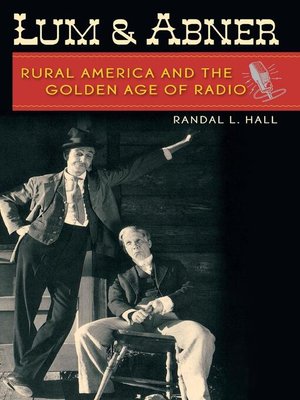Lum and Abner
ebook ∣ Rural America and the Golden Age of Radio · New Directions in Southern History
By Randal L. Hall

Sign up to save your library
With an OverDrive account, you can save your favorite libraries for at-a-glance information about availability. Find out more about OverDrive accounts.
Find this title in Libby, the library reading app by OverDrive.



Search for a digital library with this title
Title found at these libraries:
| Library Name | Distance |
|---|---|
| Loading... |
In the 1930s radio stations filled the airwaves with programs and musical performances about rural Americans — farmers and small-town residents struggling through the Great Depression. One of the most popular of these shows was Lum and Abner, the brainchild of Chester "Chet" Lauck and Norris "Tuffy" Goff, two young businessmen from Arkansas.
Beginning in 1931 and lasting for more than two decades, the show revolved around the lives of ordinary people in the fictional community of Pine Ridge, based on the hamlet of Waters, Arkansas. The title characters, who are farmers, local officials, and the keepers of the Jot 'Em Down Store, manage to entangle themselves in a variety of hilarious dilemmas. The program's gentle humor and often complex characters had wide appeal both to rural southerners, who were accustomed to being the butt of jokes in the national media, and to urban listeners who were fascinated by descriptions of life in the American countryside.
Lum and Abner was characterized by the snappy, verbal comedic dueling that became popular on radio programs of the 1930s. Using this format, Lauck and Goff allowed their characters to subvert traditional authority and to poke fun at common misconceptions about rural life. The show also featured hillbilly and other popular music, an innovation that drew a bigger audience. As a result, Arkansas experienced a boom in tourism, and southern listeners began to immerse themselves in a new national popular culture.
In Lum and Abner: Rural America and the Golden Age of Radio, historian Randal L. Hall explains the history and importance of the program, its creators, and its national audience. He also presents a treasure trove of twenty-nine previously unavailable scripts from the show's earliest period, scripts that reveal much about the Great Depression, rural life, hillbilly stereotypes, and a seminal period of American radio.







